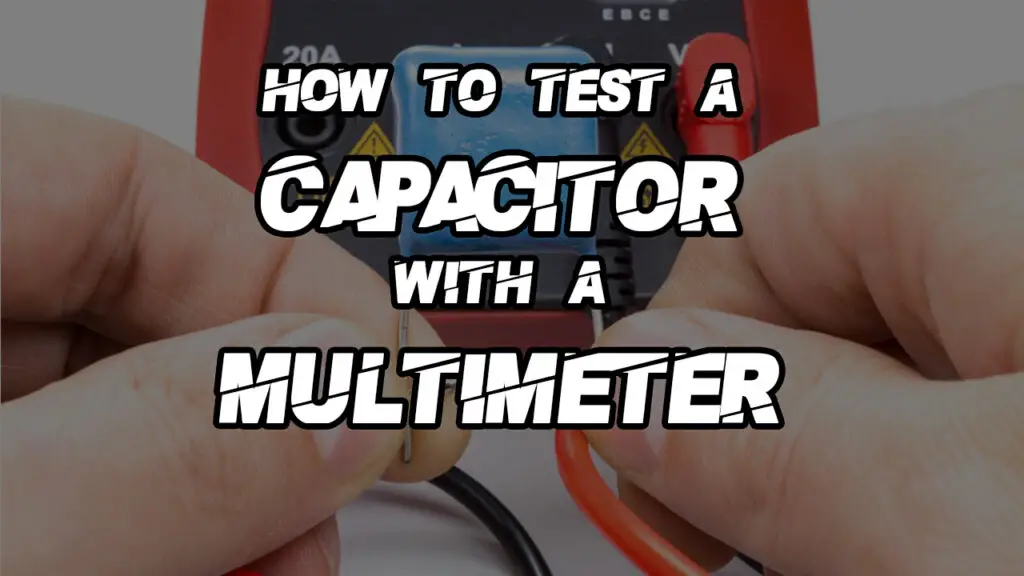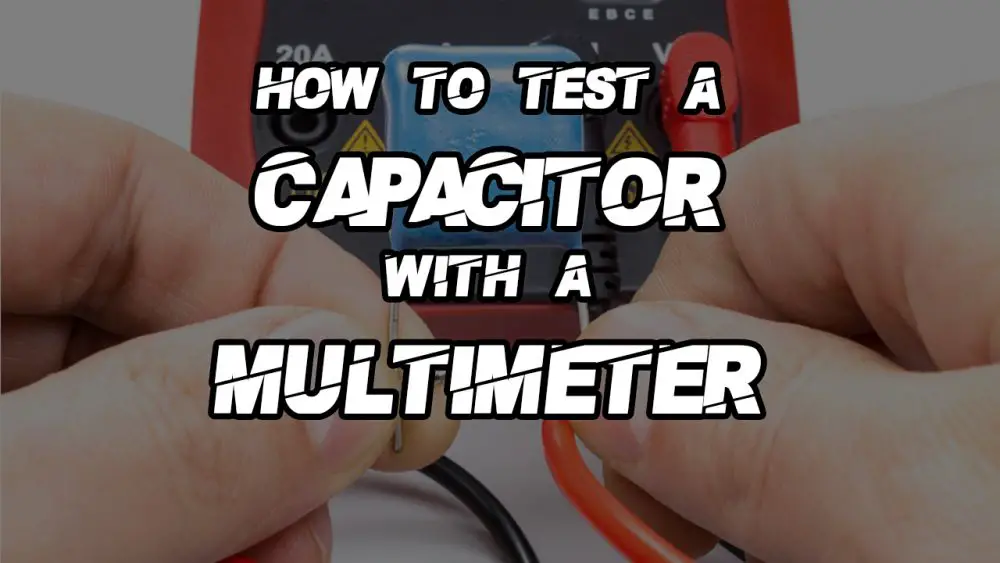How To Test A Capacitor With A Multimeter In A Circuit
A circuit board consists of multiple components that are prone to damage due to overvoltage or similar issues. Some types of damaged parts, like IC and resistor, can be identified by simple looking. Alternatively, other components, like a capacitor, demand desoldering to identify the faulty components so we are describing to you, how to test a capacitor in a circuit with a multimeter.
This post will let you know how to detect a lousy capacitor with zero desoldering. Undoubtedly, the faulty capacitor loses its shape, colour, and appearance that can be seen directly. But, keep in mind this is not the case in every situation. A regular looking capacitor may be a faulty one.
Here comes the need for in-circuit detection to save your time. Moreover, as a professional, you should know all these tricks. But before exploring essential methods, we would discuss some basics.

Types of capacitor
The manufacturer divides the capacitor into two categories. One type is referred to as polarized, and the other is termed as a non-polarized capacitor. In your professional life, you have to deal with both types of capacitors, so basic understanding is necessary.
- The capacitor with zero polarity is termed non-polarized, and these are small in size. So you can say that there is no negative or positive pole. These capacitors are ceramic, or mica and make the electrolytic composition.
- Polarized capacitors show indirect polarity, indicating the positive and negative signs. These are larger than the non-polarized capacitor type. A significant point to consider is, you have to connect them in one way.
Reason for capacitor failure
- A large number of causes contribute to making a capacitor nonfunctional. As a professional, you should know these reasons.
- When you use a capacitor for an extended period of time it can make it nonfunctional. You can say the capacitor starts to lose its functionality as its age increases.
- If weather conditions are cold or hot, the dielectric system gets disturbed. This process leads to the failure of a capacitor.
- Overvoltage can break down dielectric into electrons. In this way, the capacitor gets short.
- When moisture or humidity is present, oxidation takes place at the terminals; this reaction demands a high current to recover the layer of aluminium oxide, as a result the overall impact on the circuit is negative.
- Chemical contamination might disturb the internal composition of a capacitor and result in the destruction of a capacitor.
Visual indication of capacitor failure
When a capacitor is at fault, it can be identified from seeing outside.
- It is expected that faulty capacitors consist of some marks that make the detection very easy.
- The sides of the capacitor may get swollen due to internal problems. This is the indication of the faulty capacitor.
- The capacitor may change its colour to tell you that the capacitor is at fault.
- The capacitor can leak and disturb the internal circuit.
- When these changes are visible, then go and change the capacitor at once.
The Testing Of A Capacitor By A Multimeter
The capacitors are present in the UPS, amplifiers, motherboard, and multiple other devices. In-circuit detection is a little confusing, and it is not as simple as it looks. There are various methods to check polarized and non-polarized capacitors. Let us discuss both types of capacitors one by one.
Nonpolar Capacitor Test
- Turn the capacitor on and switch it to the continuity mode.
- To test the capacitor, attach both the terminals of the capacitor to the leads of a multimeter.
- If it beeps continuously, then it is an indication of the faulty capacitor. Moreover, slow reading also indicates a defective capacitor. The value 5 and above will tell the capacitor is totally functioning.
Polar Capacitor Test
- Turn the capacitor switch to the continuity mode.
- Turn the circuit board open and attach the multimeter probes to the capacitor leads below. Attach the negative and positive leads to their respective terminals.
- Notice the beeps and readings. Continuous beeping is the indication of a faulty capacitor.
- Another point to mention here is that the slow reading also indicates a defective capacitor.
- Secondly, if the reading inincreases, reachess a specific l,evel and getss low to the value of 1,indicates that the capacitor is functionong well.
- We recommend you take the reading 4 to 5 times to ensure accuracy.
How to check a Capacitor using Multimeter without Capacitance Setting
Mainly the low budget Digital Multimeters do not include Capacitance Meter or Capacitance Settings. However, even with these Multimeters, we can test a Capacitor.
- First, remove the capacitor from the circuit board and completely discharge it.
- Set the multimeter to measure the resistance and place the knob selector to Ohm or resistance settings. If the multimeter is a manual range, then there are multiple ranges of resistance measurement (on a manual multimeter). Always select a higher range up to 20 KΩ to 200 KΩ for accuracy.
- Connect the multimeter leads to the terminals of the capacitor red lead to the positive and black lead to the negative terminal when we are testing a polarised capacitor.
- The Digital Multimeter will show a reading of resistance on display and the resistance of an open circuit (infinity). Note the reading was for a short period.
- Now disconnect the capacitor from the multimeter and repeat the test several times.
- Every attempt of the test should show a similar result on display on an excellent capacitor.
- If you observe no change in the resistance in the further tests, that means the capacitor is dead.
This method of testing the capacitor might not be accurate but can differentiate between good and bad capacitors. However, this method also doesn’t give the capacitance of the capacitor.
Frequently Asked Questions
The microfarad is written in the small symbol as it is too long to write. Thus, the symbol of microfarad is µF.
Capacitors have the voltage and capacitance value printed on it
Generally, professionals use both multimeter and ESR to detect the health of a capacitor. But professionals vote for ESR to check the capacitance. According to them, the ESR system gives more accurate readings than a typical multimeter.
Final words:
We have written this article on testing a capacitor with a multimeter in a circuit due to its extensive research. Inboard capacitor detection is quite tricky. Although it seems as simple as testing an independent capacitor, it needs practice. As a professional, you should know all the tricks. We recommend, when a capacitor is declared as faulty, it is worthy of separating that capacitor from the board and then confirming the value again; this is because a multimeter sometimes gives false results. It is worth noting that the professionals recommend ESR to detect in board capacitor detection. ESR stands for equivalent series resistance. According to them, this device gives more accurate multimeter results. Its usage to see the capacitor is as simple as by a multimeter. You can use it to verify the values or more. The choice is yours. Anyways, we hope that you will detect the inboard circuit detection with ease.
Related post:
FLUKE 115 COMPACT TRUE-RMS DIGITAL MULTIMETER




